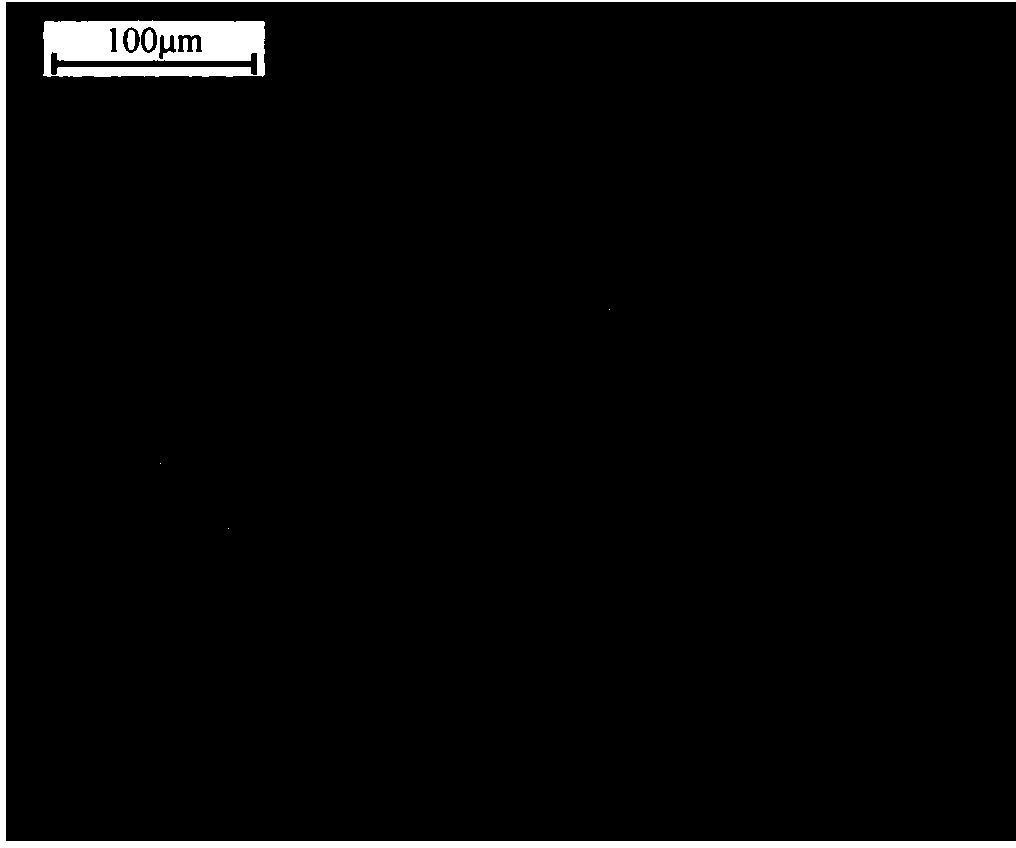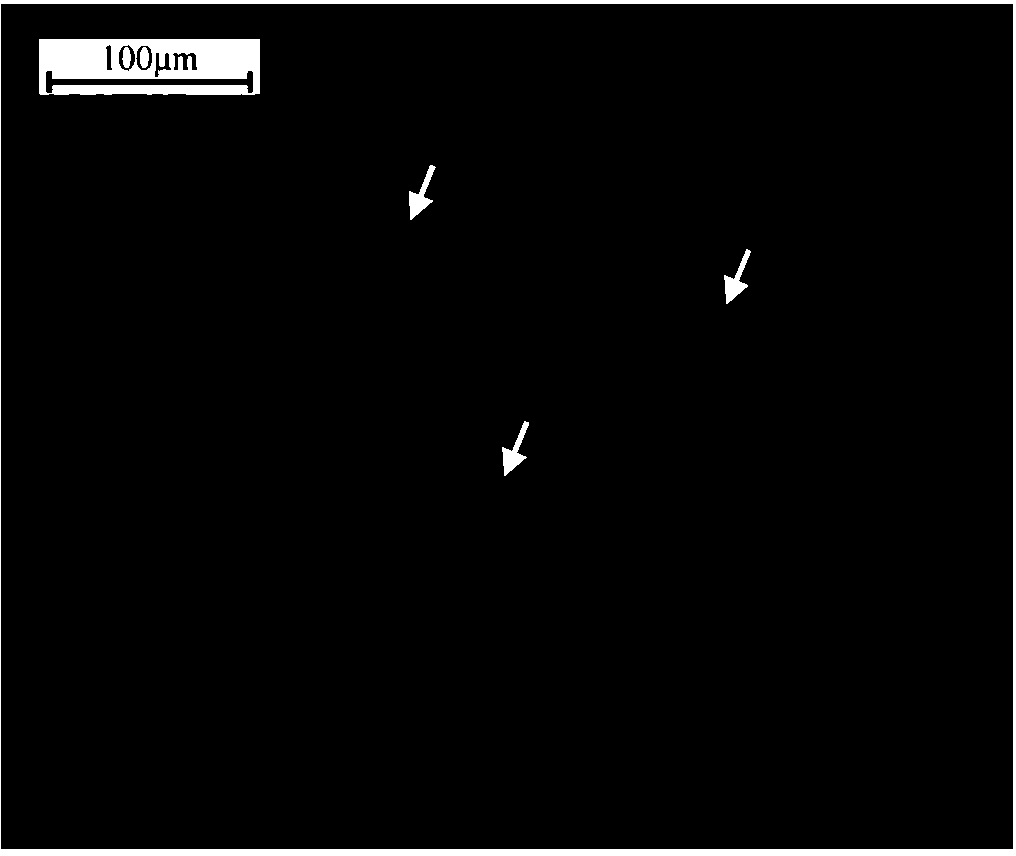Metallographic corrosion method for clearly displaying 9-12% Cr heat-resistant steel original austenite grain boundary
A clear display and metallographic corrosion technology, which is applied in the field of metallographic corrosion to clearly display the original austenite grain boundaries of 9-12% Cr heat-resistant steel, can solve the difficulty of displaying the original austenite grains of heat-resistant steel, etc. problem, to achieve the effect of increasing the electrochemical reaction intensity, clear display, and clear outline
- Summary
- Abstract
- Description
- Claims
- Application Information
AI Technical Summary
Problems solved by technology
Method used
Image
Examples
Embodiment 1
[0047] (1) Grinding: put the cut 12Cr10Mo1W1VNbN rotor steel metallographic sample on the grinding wheel for grinding, grind off the surface oxide skin and roughly smooth it, put the polished sample in turn on 200 mesh, 400 mesh, 600 mesh Grind on 800-grit, 800-grit, and 1000-grit sandpaper. During the grinding process, it is necessary to observe frequently to ensure that all scratches are along the grinding direction of the pass and there are no obvious coarse scratches. When grinding the next pass, the sample should be rotated 90° before continuing to grind .
[0048] (2) Polishing: clean the ground sample, and polish it on a polishing cloth, using water as a lubricant, and a 2.5 μm diamond polishing paste as the polishing agent. The polished samples were washed with water and ethanol and dried, and observed under a metallographic microscope without obvious scratches.
[0049] (3) Corrosion: Put the polished sample into 60% nitric acid corrosion solution (volume percentage...
Embodiment 2
[0053] (1) Grinding: put the cut 12Cr10Mo1W1VNbN rotor steel metallographic sample on the grinding wheel for grinding, grind off the surface oxide skin and roughly smooth it, put the polished sample in turn on 200 mesh, 400 mesh, 600 mesh Grind on 800-grit, 800-grit, and 1000-grit sandpaper. During the grinding process, it is necessary to observe frequently to ensure that all scratches are along the grinding direction of the pass and there are no obvious coarse scratches. When grinding the next pass, the sample should be rotated 90° before continuing to grind .
[0054] (2) Polishing: clean the ground sample, and polish it on a polishing cloth, using water as a lubricant, and a 2.5 μm diamond polishing paste as the polishing agent. The polished samples were washed with water and ethanol and dried, and observed under a metallographic microscope without obvious scratches.
[0055] (3) Corrosion: Put the polished sample into 55% nitric acid corrosion solution (volume percentage...
Embodiment 3
[0059] (1) Grinding: put the cut 12Cr10Mo1W1VNbN rotor steel metallographic sample on the grinding wheel for grinding, grind off the surface oxide skin and roughly smooth it, put the polished sample in turn on 200 mesh, 400 mesh, 600 mesh Grind on 800-grit, 800-grit, and 1000-grit sandpaper. During the grinding process, it is necessary to observe frequently to ensure that all scratches are along the grinding direction of the pass and there are no obvious coarse scratches. When grinding the next pass, the sample should be rotated 90° before continuing to grind .
[0060] (2) Polishing: clean the ground sample, and polish it on a polishing cloth, using water as a lubricant, and a 2.5 μm diamond polishing paste as the polishing agent. The polished samples were washed with water and ethanol and dried, and observed under a metallographic microscope without obvious scratches.
[0061] (3) Corrosion: Put the polished sample into 65% nitric acid corrosion solution (volume percentage...
PUM
 Login to View More
Login to View More Abstract
Description
Claims
Application Information
 Login to View More
Login to View More - Generate Ideas
- Intellectual Property
- Life Sciences
- Materials
- Tech Scout
- Unparalleled Data Quality
- Higher Quality Content
- 60% Fewer Hallucinations
Browse by: Latest US Patents, China's latest patents, Technical Efficacy Thesaurus, Application Domain, Technology Topic, Popular Technical Reports.
© 2025 PatSnap. All rights reserved.Legal|Privacy policy|Modern Slavery Act Transparency Statement|Sitemap|About US| Contact US: help@patsnap.com



